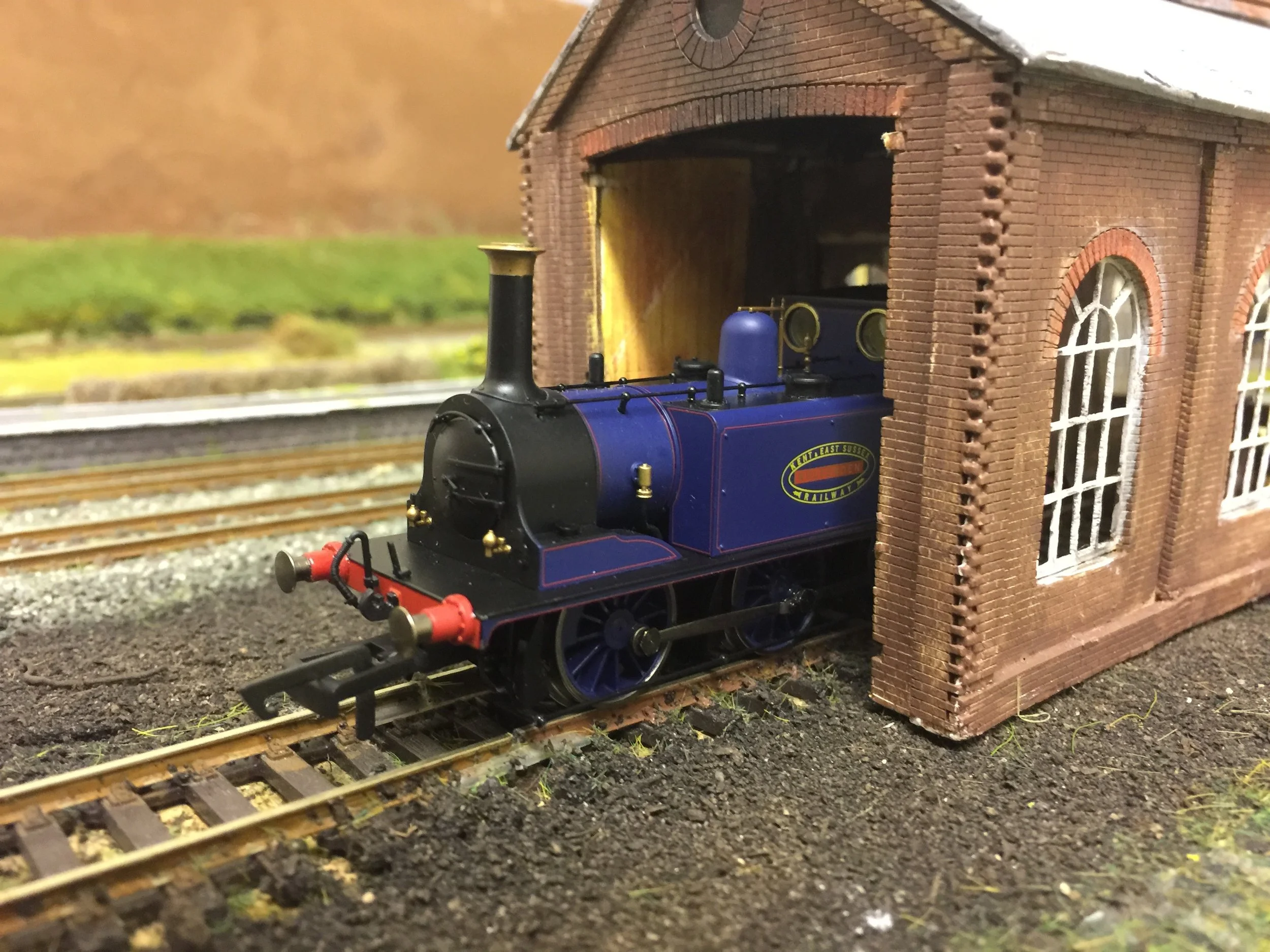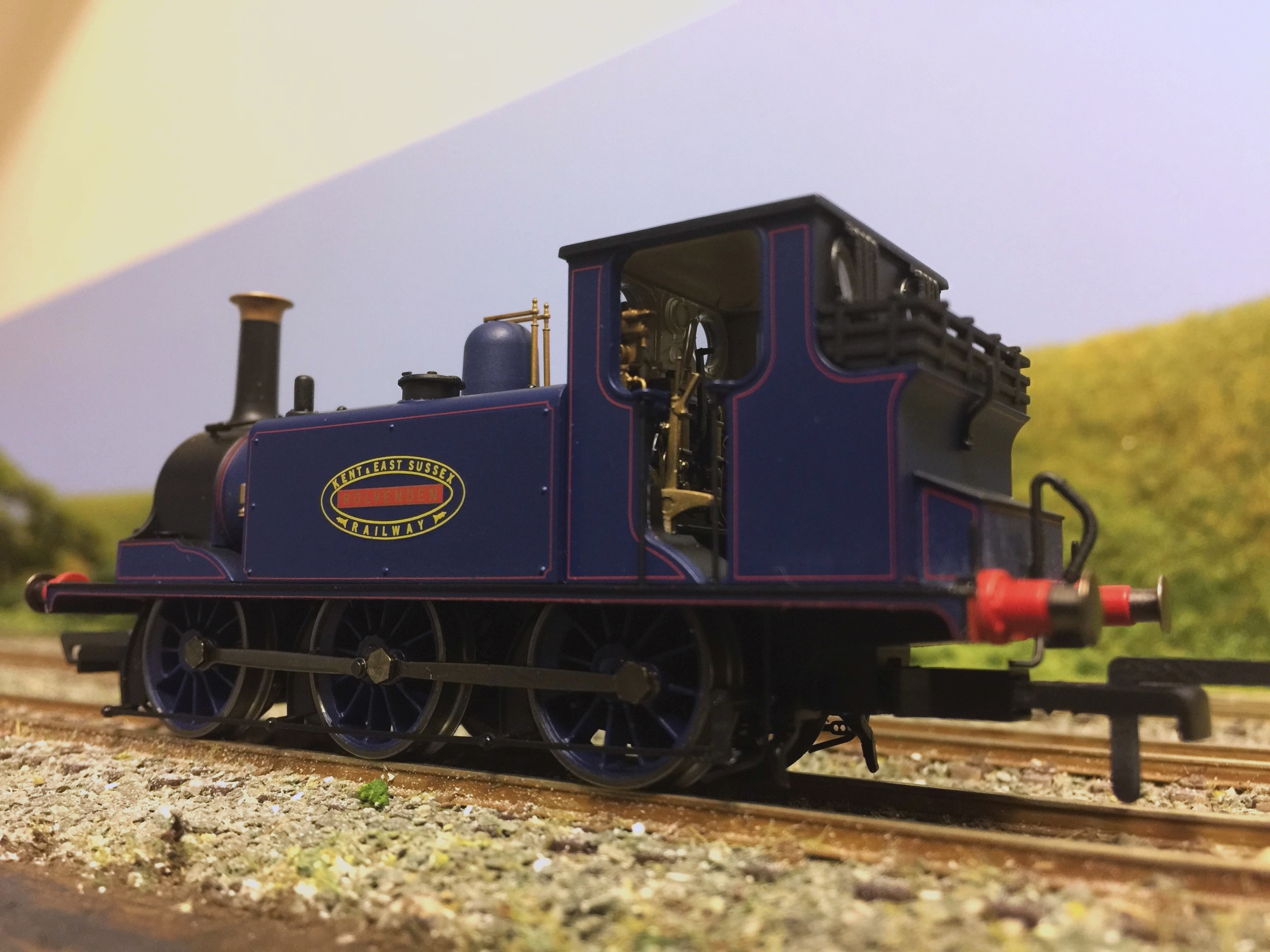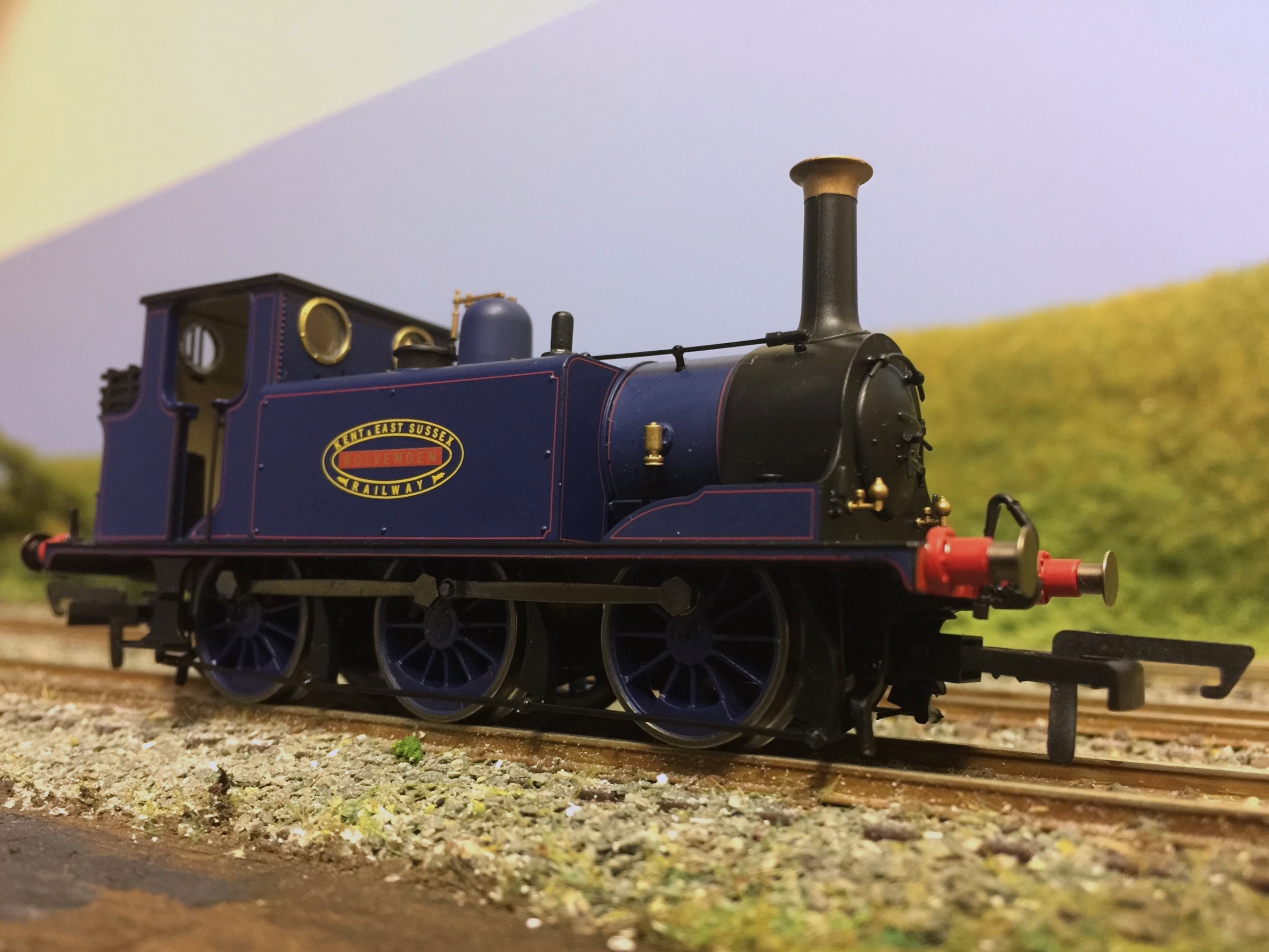Written by Richard Grigg, photos and Model provided by Gwion Rhys Davies.
Introduction
Designed by William Stroudly of the LBSCR (London Brighton and South Coast Railway), the A1 class 0-6-0 tank engines were built at Brighton works between 1872 and 1880 and initially worked commuter trains on the busy lines in the south and south-east London areas.
Although classed as A1s these engines are more famously known by their nickname of 'Terriers' which comes from the distinctive bark of the exhaust blast. Other nicknames included 'Rooters' (as they were known to South London crews) and 'Hayling Billy' (an alias given to the Terriers who worked the Hayling Island branch line). Between 1911 and 1913 17 members of the class were re-classified as A1X after being given some modifications.
As time moved on so did the Terriers, working on the Sussex branch lines as well as performing shunting duties. Several members were sold to other companies expanding their places of operations.
Withdrawal of the class took place between 1901 and 1964 and of the 50 built 10 of them survive in preservation.
Hornby has recently launched a new tooling of the Terriers to replace their previous model that was originally produced by Dapol and in this review we shall be taking a closer look at one of the first offerings in the form of A1 Terrier 'Rolvenden' in the K&ESR (Kent and East Sussex Railway) dark blue (R3781).
Also available:
R3767: A1X Terrier in BR black with the early emblem
R3768: A1X Terrier in BR black with the late crest
R3780: A1 Terrier 'Stepney' in the LB&SCR livery
R3782: A1 Terrier in SE&CR livery
R3783: A1X Terrier in Southern Railway Green
RRP: £89.99 (DCC ready) or £109.99 (DCC fitted)
Packaging
The model comes in the traditional Hornby packing which consists of the well known 'ice block' in a cardboard box with card sleeve over that. An accessory pack, containing pipework, is also enclosed as well as the care /maintenance leaflet.
Detail
I've always thought that the former Dapol tooling of the Terrier was well detailed but when comparing the old with the new the difference is immediately apparent.
Moulded details include:
Rivets on the cab roof, boiler, water tanks (top and sides), cab front, buffer beams, chimney
base and cab window frames
Fusible plugs on the firebox
Boiler banding
Separately fitted details include:
Whistle valve
Water filler caps and overflow indicators
Safety valves
Smokebox dart handles
Lamp irons
Metal buffers (unsprung)
Handrails on top of the boiler
Flush glazing on the cab windows (front and back)
Rear cab window guards
Cosmetic coupling hooks
Vacuum brake pipes
Below the running board you'll find brake shoes and rigging along with the sanding gear piping.
Inside the cab the intricate details continue with all of the separate fittings picked out with copper paint, sadly the dials have been left blank. The coal load in the bunker is neatly presented however it still lacks realism so a small sprinkling of the real stuff is highly recommended to those who want to change it.
So all in all the detail of this model is extraordinary however there are some observations that I have made regarding the build quality of this loco. Upon opening the packing for the first time it was discovered that one of the cab steps had broken off during transit from the factory and was rattling around in the packaging. In addition to that, the sanding pipes required adjusting to put them back in their rightful place. Finally one of the guard irons has snapped at the tip, in spite of this part of the model being made from metal.
For a brand new model to have so many build quality issues is really quite worrying and I can only hope that this is an isolated incident and that Hornby are not sacrificing high end quality in order to beat the competition and be first.
Livery Application
The loco sports a very fine and accurate K&ESR dark blue with red lining. There are small touches of copper and gold paint applied to the chimney cap and various valves and the decals are printed sharply and cleanly, standing well out from the dark livery.
Special Features
Unlike the previous incarnation this new Terrier comes as DCC ready and takes a 6-pin decoder. The care/maintenance leaflet seems to suggest that the models are also designed to be DCC sound fitted although I can't really see where the speaker could be installed given the loco's small stature. If a DCC or TTS sound fitted Terrier is announced in the future I'll be interested to see how Hornby achieved the installation of the speaker.
Performance
The model is fitted with a 3-pole skew wound motor and even before the initial run-in period this model was a smooth and quiet runner straight out of the box. The chassis and running board are machined out of die-cast metal giving the model adequate weight and ample traction and pulling power.
Final Thoughts
Because of financial problems in the past 2019 is the year that Hornby really needs to turn it around and the newly tooled Terrier is certainly a step in the right direction.
The exquisite detailing and fine livery combined with the easier DCC installation and smooth running makes this model a massive improvement over the previous tooling, which has served the Hornby range for over 20 years and is going to be a hit with modellers everywhere.
The build quality issues I've mentioned did raise eyebrows but I'm willing however to give Hornby the benefit of the doubt in this case and assume that the model I reviewed is just a one-off incident and isn't widespread across entire batches.
As everyone is aware Hornby are not the only ones this year to bring out a retooled OO scale Terrier as Dapol are also doing the same in collaboration with model railway retailer Rails of Sheffield. It'll be interesting to see which one comes out as "top dog" in the end.
Pros & Cons
Pros
Great value for money
Smooth and quiet runner
Immaculate livery
Sharp and clear decals
Adequate tractive effort
Excellent detailing both moulded and separately fitted
Easier DCC installation than previous tooling
Cons
Overscaled crank pins
Questionable quality control *
With this I give an overall score of 8.5/10
* Note: Due to the build quality issues encountered I shall be revisiting this review in the future when I acquire another Hornby Terrier.









